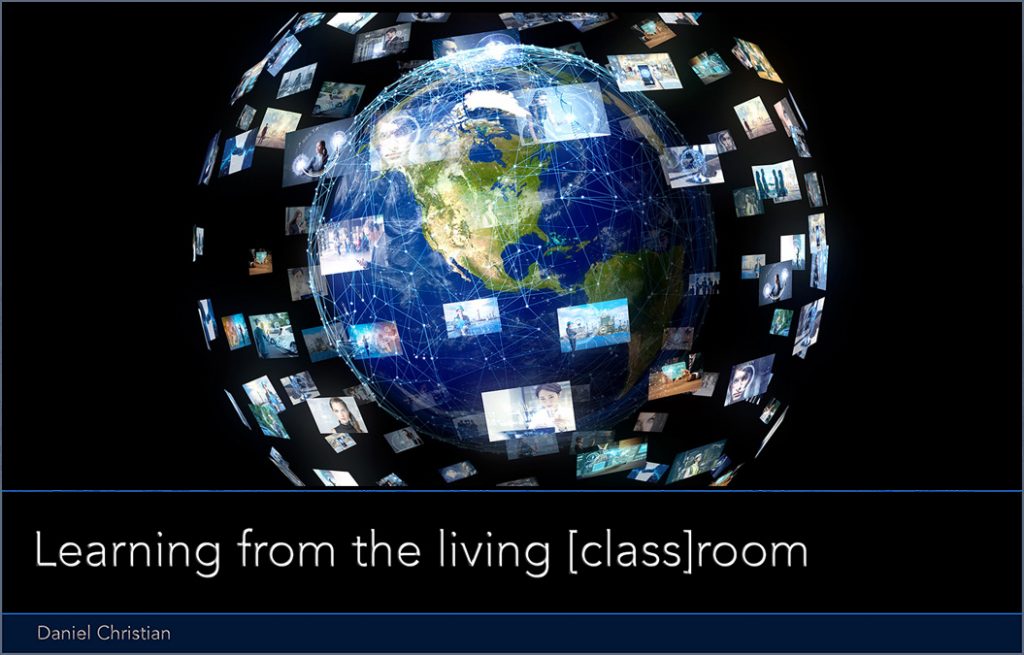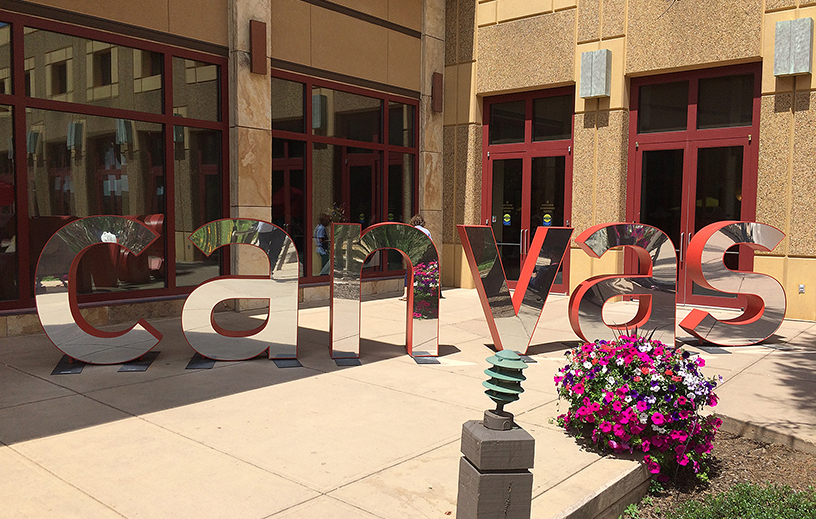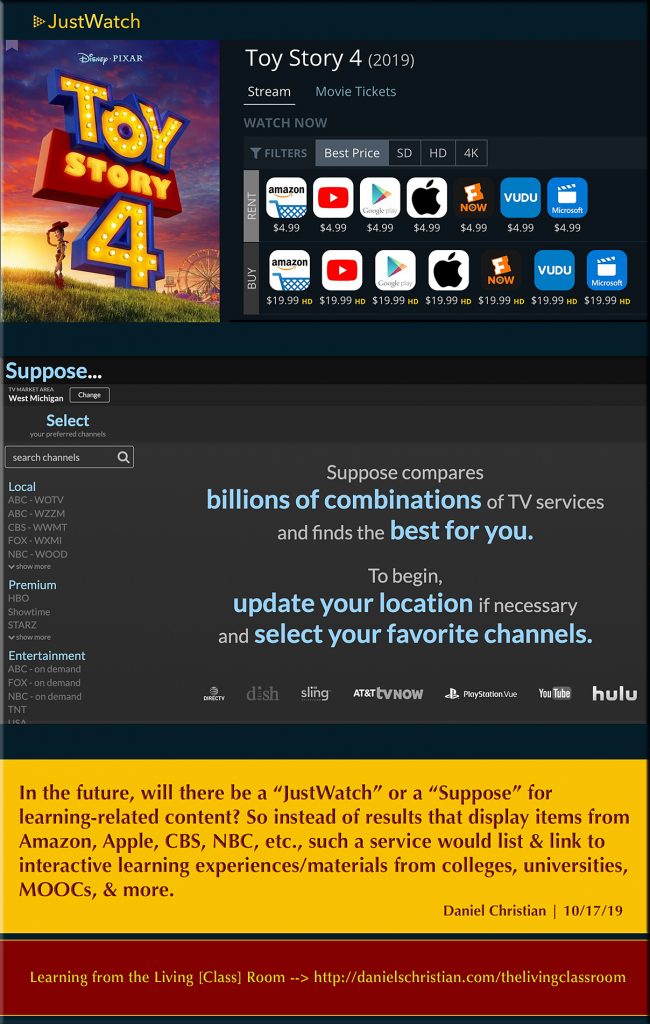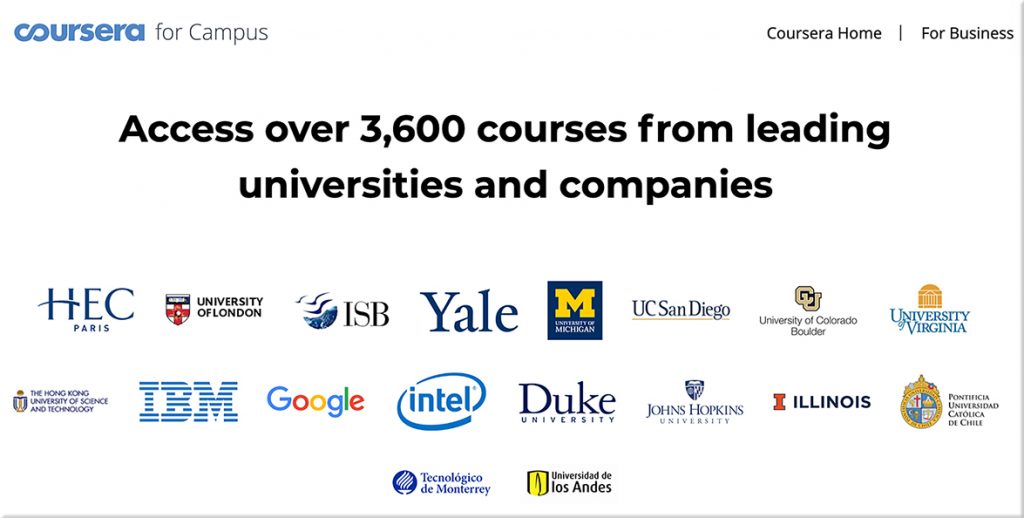From DSC:
Though we aren’t quite there yet, the pieces continue to come together to build a next generation learning platform that will help people reinvent themselves quickly, efficiently, constantly, and cost-effectively.






From DSC:
Along these lines, we’ll likely see more bots and virtual legal assistants that we will be able to ask questions of.
#A2J #AccessToJustice #legal #lawyers #society #legaltech #bots #videoconferencing #AI #bots #VirtualAssistants
Along these lines, also see:
Innovative and inspired: How this US law school is improving access to justice — from studyinternational.com
Excerpt:
Though court and other government websites in the US provide legal information, knowing what to search for and understanding legal jargon can be difficult for lay people.
Spot, software that is being developed at the LIT Lab, aims to fix this.
“You know you have a housing problem. But very few people think about their housing problems in terms of something like constructive eviction,” explains David Colarusso, who heads the LIT Lab. “The idea is to have the tool be able to spot those issues based upon people’s own language.”
Developed by Colarusso and students, Spot uses a machine-based algorithm to understand legal queries posed by lay persons. With Spot, entering a question in plain English like “My apartment is so moldy I can’t stay there anymore. Is there anything I can do?” brings up search results that would direct users to the right legal issue. In this case, the query is highly likely to be related to a housing issue or, more specifically, to the legal term “constructive eviction.”
Lastly, here’s an excerpt from INSIGHT: What’s ‘Innovative’ in BigLaw? It’s More Than the Latest Tech Tools — from news.bloomberglaw.com by Ryan Steadman and Mark Brennan
Top Innovation Factors for Success
Before revving the engines in the innovation process, the safety check comes first. Successful innovation requires a deliberate, holistic approach that takes into consideration people, process, and technology. Firms and vendors that listen and learn before implementing significant change will stand apart from competitors—and help ensure long-term success.
The Rise of Do-It-Yourself Education — from insidehighered.com by Ray Schroeder
Do it yourself is more than just a trend for crafts and home improvements — it is an ethos that has reached higher education.
Excerpt (emphasis DSC):
More than 50 percent of the DIY-ers are between 24 and 44 years of age, and the numbers are growing. This trend is immutable now; it is continuing to grow in numbers and expand into new fields every year.
…
The pervasive DIY mind-set has spilled over into independent learning online, as Dian Schaffhauser writes:
A do-it-yourself mindset is changing the face of education worldwide, according to new survey results. Learners are “patching together” their education from a “menu of options,” including self-teaching, short courses and bootcamps, and they believe that self-service instruction will become even more prevalent for lifelong learning. In the United States specifically, 84 percent of people said learning would become even more self-service the older they get.
Heutagogy is the study and practice of self-determined learning.
As enrollments decline nationally, so many individual universities continue to experience declines year after year. Is it not worth considering these broad societal changes that are moving students toward skilling and upskilling via DIY, rather than marketing the same degrees in the same structure that is producing losses year after year? Who is leading this initiative at your university?
Canvas parent Instructure to go private in $2B deal — from educationdive.com by Hallie Busta

Also see:
This former Apple designer is taking on Amazon’s Twitch with $146 million and Fox’s backing — from fastcompany.com by Jeff Beer
Caffeine founder and CEO Ben Keighran talks about why live streaming is much more than gaming—it’s the future of TV.
Excerpt (emphasis DSC):
Live-streaming startup Caffeine, started by former Apple designer Ben Keighran, is emerging out of a two-year beta today and aims to overtake Amazon’s Twitch and Microsoft’s Mixer as the world’s leading live broadcasting platform. The official release version features a completely new design for its website and iOS and Android apps that combines editorial, algorithmic, and social connections to make it easier to discover live broadcasting from gamers, entertainers, and athletes, as well as create your own interactive broadcasts featuring live television content.
Twitch is the undisputed king of live-streamed gaming, but Keighran is betting that Caffeine’s more diverse focus to go beyond gaming—into entertainment and sports—will make it a more attractive place for both viewers and creators.
Keighran says another technological difference between Caffeine and Twitch is in its ease of use and quickness. “In just a couple of clicks, you can stream Red Bull 24/7 and be the commentator, you can stream Fortnite in one click, you can create an entertainment stream and talk about the new sneaker you just got, and you can do that all in one place,” he says. “And it’s all in real-time—there’s no delay in the video, whereas on Twitch, there’s up to a 60-second delay.”
From DSC:
Hmmm… social interaction. New platforms for streaming live content. Ability to comment and ask questions (i.e., audience interactions). Interactive chats.
Can we add learning-related experiences to the audiences and applications here?
A somewhat related item:
Announcing AI Business School for Education for leaders, BDMs and students — from educationblog.microsoft.com by Anthony Salcito
Excerpt:
…Microsoft’s AI Business School now offers a learning path for education. Designed for education leaders, decision-makers and even students, the Microsoft AI Business School for Education helps learners understand how AI can enhance the learning environment for all students—from innovations in the way we teach and assess, to supporting accessibility and inclusion for all students, to institutional effectiveness and efficiency with the use of AI tools. The course is designed to empower learners to gain specific, practical knowledge to define and implement an AI strategy. Industry experts share insights on how to foster an AI-ready culture and teach them how to use AI responsibly and with confidence. The learning path is available on Microsoft Learn, a free platform to support learners of all ages and experience levels via interactive, online, self-paced learning.

5 good tools to create whiteboard animations — from educatorstechnology.com
Excerpt:
In short, whiteboard animation (also called video scribing or animated doodling) is a video clip in which the recorder records the process of drawing on a whiteboard while using audio comment. The final result is a beautiful synchronization of the drawings and the audio feedback. In education, whiteboard animation videos are used in language teaching/learning, in professional development sessions, to create educational tutorials and presentations and many more. In today’s post, we are sharing with you some good web tools you can use to create whiteboard animation videos.
Coursera offers its 3,600-course catalog to non-affiliated universities — from ibleducation.com
Excerpt:
Coursera announced Coursera for Campus on October 3.
This initiative is designed to allow any university, including those who are not partners, to supplement their course offering with Coursera’s 3,600-course catalog, integrating these classes into their curricula and offering credit-eligible, and blended learning.
These universities will also be able to access Coursera’s analytics as well as author content, assessments, and labs. Features such as single sign-on (SSO) and API integration will be available, too.
Also see:
Also see:
Top eLearning Gamification Companies 2019 — from elearningindustry.com by Christopher Pappas
Excerpt:
The Top Performing eLearning Gamification Companies 2019
As community leaders, here at eLearning Industry, we have evaluated hundreds of eLearning content development companies in the past. As we are constantly on the lookout for new advancements and trends in the eLearning field that are relevant to the industry, we decided to take a very close look at outstanding providers of gamification. We have focused on prestige, influence, application of gamification tools, activity in the eLearning field, gamification innovations, and many more subcategories.
For the list of the Top eLearning Gamification Companies 2019, we chose and ranked the best gamification companies based on the following 7 criteria:
DIY Mindset Reshaping Education — from campustechnology.com by Dian Schaffhauser
Excerpt:
A do-it-yourself mindset is changing the face of education worldwide, according to new survey results. Learners are “patching together” their education from a “menu of options,” including self-teaching, short courses and bootcamps, and they believe that self-service instruction will become even more prevalent for lifelong learning. In the United Sates specifically, 84 percent of people said learning would become even more self-service the older they get.
Among those who have needed to reskill in the last two years to continue doing their jobs, 42 percent found information online and taught themselves and 41 percent took a course or training offered by their employers, a professional association or bootcamp, compared to just 28 percent who pursued a professional certification program, 25 percent who enrolled in a university-level degree program or 12 percent who did nothing.
If people had to learn something new for their career quickly, they said they would be more likely turn to a short training program (47 percent), followed by access to a free resource such as YouTube, Lynda.com or Khan Academy (33 percent). A smaller share (20 percent) would head to an accredited university or college.
From DSC:
This is why the prediction from Thomas Frey carries weight and why I’ve been tracking a new learning platform for the 21st century. Given:

…there needs to be a new, up-to-date, highly responsive, inexpensive learning-related platform for the 21st century. I call this learning platform of the future, “Learning from the Living [Class] Room.” And while it requires subject matter experts / humans in significant ways, AI and other technologies will be embedded throughout such a platform.
“I’ve been predicting that by 2030 the largest company on the internet is going to be an education-based company that we haven’t heard of yet,” Frey, the senior futurist at the DaVinci Institute think tank, tells Business Insider.
— source
Addendum on 9/18/19:
For $400 per course, students will be able to gain access to course videos that are cinematically filmed and taught by “some of the brightest minds in academia.” Outlier.org students will also have access to problem sets, one-on-one tutoring and assessments proctored through artificial intelligence.
6 basic Youtube tips everyone should know — from hongkiat.com by Kelvon Yeezy
Example tips:
1. Share video starting at a specific point . <– A brief insert from DSC: This is especially helpful to teachers, trainers, and professors
If you want to share a YouTube video in a way that it starts from a certain point, you can do so in a couple of simple steps.
Just pause the video at the point from where you want the other user to start watching it and right-click on the video screen. A menu will appear from which you can choose Copy video URL at the current time. The copied link will open the video starting from that specific time.
4. More accurate video search
There are millions of videos on Youtube. So trying to find that specific Youtube video you want to watch is an adventure in itself. In this quest, you might find yourself crawling through dozens of pages hoping to find the video you actually want to watch.
If you don’t want to go through all this hassle, then simply add allintitle: before the keywords you are using to search for the video. This basically gives you only those videos that include the chosen keywords.
Take a tour of Google Earth with speakers of 50 different indigenous languages — from fastcompany.com by Melissa Locker
Excerpt:
After the United Nations declared 2019 the International Year of Indigenous Languages, Google decided to help draw attention to the indigenous languages spoken around the globe and perhaps help preserve some of the endangered ones too. To that end, the company recently launched its first audio-driven collection, a new Google Earth tour complete with audio recordings from more than 50 indigenous language speakers from around the world.
Disrupting Education. The Rise Of K-12 Online And The Entrepreneurial Opportunities — from forbes.com by Bernhard Schroeder
Excerpt:
Online learning, once reserved for higher education, is now a growing trend among K-12 students nationwide. Over 2.7 million students across the United States are taking part in digital learning, and many students in grades K-12 are getting a high-quality education online through a full-time online public school.
Also related/see:
Online learning has the potential to be both high quality and significantly less expensive than its residential counterpart.
A Snapshot of Instructional Design: Talking Points for a Field in Transition — from er.educause.edu by Whitney Kilgore, Patrice Torcivia and Laura Gogia
Excerpt:
The resurgence of learning engineering as a concept and professional role in higher education has exacerbated tensions within the field of instructional design related to job titles, responsibilities, and position within academic institutions.
“World-class instructional designers can help one institution differentiate itself from others in the online learning market. I think that realization is driving the conversation on instructional design in many institutions.”
…
“Today, we need instructional designers who are equally fluent in learning design, faculty professional development, research methods, and technology,” Bowen elaborated. “They must be able to partner with faculty to create, experiment, and publish innovative approaches to teaching and learning. Unfortunately, this looks a lot different than what we have in many instructional design units right now.”
Kyle Bowen, director of innovation at Penn State

